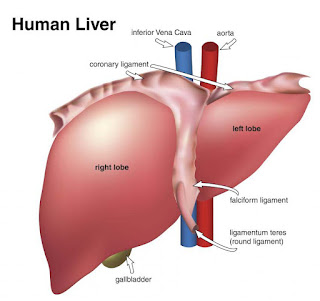Researchers at the University of California, Berkeley, in collaboration with scientists at the Gladstone Institutes, have developed a template for growing beating cardiac tissue from stem cells, creating a system that could serve as a model for early heart development and a drug-screening tool to make pregnancies safer.
In experiments to be published Tuesday, July 14, in the journal Nature Communications, the researchers used biochemical and biophysical cues to prompt stem cells to differentiate and self-organize into micron-scale cardiac tissue, including microchambers.
"We believe it is the first example illustrating the process of a developing human heart chamber in vitro," said Kevin Healy, a UC Berkeley professor of bioengineering, who is co-senior author of the study with Dr. Bruce Conklin, a senior investigator at the Gladstone Institute of Cardiovascular Disease and a professor of medical genetics and cellular and molecular pharmacology at UC San Francisco. "This technology could help us quickly screen for drugs likely to generate cardiac birth defects, and guide decisions about which drugs are dangerous during pregnancy."
To test the potential of the system as a drug-screening tool, the researchers exposed the differentiating cells to thalidomide, a drug known to cause severe birth defects. They found that at normal therapeutic doses, the drug led to abnormal development of microchambers, including decreased size, problems with muscle contraction and lower beat rates compared with heart tissue that had not been exposed to thalidomide.
"We chose drug cardiac developmental toxicity screening to demonstrate a clinically relevant application of the cardiac microchambers," said Conklin. "Each year, as many as 280,000 pregnant women are exposed to drugs with evidence of potential fetal risk. The most commonly reported birth defects involve the heart, and the potential for generating cardiac defects is of utmost concern in determining drug safety during pregnancy."
The new milestone comes nearly four months after Healy and other UC Berkeley researchers publicly debuted a system of beating human heart cells on a chip that could be used to screen for drug toxicity. However, that heart-on-a-chip device used pre-differentiated cardiac cells to mimic adult-like tissue structure.
In this new study, the scientists mimicked human tissue formation by starting with stem cells genetically reprogrammed from adult skin tissue to form small chambers with beating human heart cells. Conklin's lab at Gladstone, an independent, nonprofit life science research organization affiliated with UC San Francisco, supplied these human induced pluripotent stem cells for this study.
The undifferentiated stem cells were then placed onto a circular-patterned surface that served to physically regulate cell differentiation and growth.
By the end of two weeks, the cells that began on a two-dimensional surface environment started taking on a 3D structure as a pulsating microchamber. Moreover, the cells had self-organized based upon whether they were positioned along the perimeter or in the middle of the colony.
Compared with cells in the center, cells along the edge experienced greater mechanical stress and tension, and appeared more like fibroblasts, which form the collagen of connective tissue. The center cells, in contrast, developed into cardiac muscle cells. Such spatial organization was observed as soon as the differentiation started. Center cells lost the expression of octamer-binding transcription factor 4 (OCT4) and epithelial cadherin (E-cadherin) faster than perimeter cells, which are critical to the development of heart tissue.
"This spatial differentiation happens in biology naturally, but we demonstrated this process in vitro," said study lead author Zhen Ma, a UC Berkeley postdoctoral researcher in bioengineering. "The confined geometric pattern provided biochemical and biophysical cues that directed cardiac differentiation and the formation of a beating microchamber."
Could eventually replace animal models
Modeling early heart development is difficult to achieve in a petri dish and tissue culture plates, the study authors said. This area of study has typically involved the dissection of animals at different stages of development to study the formation of organs, and how that process can go wrong.
"The fact that we used patient-derived human pluripotent stem cells in our work represents a sea change in the field," said Healy. "Previous studies of cardiac microtissues primarily used harvested rat cardiomyocytes, which is an imperfect model for human disease."
The researchers pointed out that while this study focused on heart tissue, there is great potential for use of this technology to study other organ development.
"Our focus here has been on early heart development, but the basic principles of patterning of human pluripotent stem cells, and subsequently differentiating them, can be readily expanded into a broad range of tissues for understanding embryogenesis and tissue morphogenesis," said Healy.
source : http://goo.gl/BfdN7j





